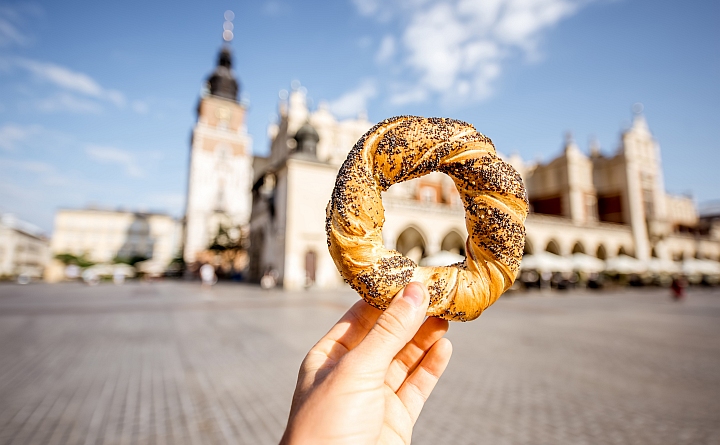Cracow – Poland’s historic capital – is a magnet for tourists. It’s a city of young people and a centre of culture, entertainment, and centuries of royal history. According to TripAdvisor, the list of Cracow’s best attractions includes the Old Town, Wawel Castle, and the Kazimierz district, all listed in the UNESCO World Heritage List. If you just come to Cracow for the weekend, you won’t manage to see much more than that.
But Cracow has a lot more hidden secrets. American journalist Ryan Socash visited the city district-by-district in search of the most interesting spots off the beaten track. He was inspired by Vienna House, which encourages constant discovery. What’s worth seeing in Cracow? Below are Kult America’ recommendations.
KROWODRZA – Młynówka Królewska Park
Młynówka is a park and a walking and cycling path which runs along a 13th-century canal running from the city centre to Bronowice, home to the Rydlówka manor house. The path was converted into a bike path in the 1960s. It was here that the wedding of the poet Lucjan Rydel took place, as well as the famous drama “The Wedding” by Stanisław Wyspiański. Inside the manor you can experience the atmosphere of Cracow at the turn of the 20th century.
GRZEGÓRZKI – the ruins of the Lubicz fortress
The ruins of the 19th century V Lubicz fortress – a gem for all lovers of military history and street art – are hidden inside the Mogilskie Roundabout, one of the most important intersections in the centre of Cracow.
Right next to it is a place where young travellers can lay their heads – Vienna House Easy Cracow. It’s a local joint with a lively, relaxed atmosphere. Here, guests can borrow bicycles to visit the most far-flung parts of the city, such as Prądnik Czerwony.
ACCOMMODATION / Vienna House Easy Cracow
PRĄDNIK CZERWONY – Zaczarowanej Dorożki Park
The park used to be a farm, with a water mill and two large fishponds built in the 17th century. Today, the area is a green oasis of relaxation for the whole family. It is worth bringing children, who will enjoy the fountain shaped like a mill wheel and the two-part playground. You have to try the traditional wheat and rye Prądnicki bread made in Prądnik Czerwony.
NOWA HUTA
This unusually interesting district of Cracow was created during the socialist period as a separate city to oppose anti-communist sentiments in society. Today, it’s a destination for tourists looking for the last remnants of the Polish People’s Republic, as well as a place where you can view an exhibition of paintings by Zbigniew Beksiński and the underground shelters built under residential blocks in the 1950s.
PODGÓRZE
This district has the mystery of Kazimierz but is much calmer and more intimate. From the Krakus Mound, which is supposedly the tomb of the legendary King Krak, you can admire the panorama of Cracow. However, Podgórze is also known for its turbulent history, as during WWII it was home to the Cracow Ghetto. Today, at the museum of Oscar Schindler’s Enamel Factory, you can delve into this sad history.
ACCOMMODATION / Vienna House Andel’s Cracow
CZYŻYNY
Located on a former airfield, the Polish Aviation Museum is home to over 200 exhibits, including 25 aircraft from Hermann Göring’s personal collection. CNN named it one of the best aviation museums in the world.
ZWIERZYNIEC – Decius Park
Yet another green area is located in Zwierzyniec – a park with a Renaissance palace, the Villa Decius, and an original gallery of sculptures and paintings by Bolesław Chromy. The artist’s best-known works are the monument of Fryderyk Chopin and Piwnica pod Baranami – the famous literary cabaret and meeting place for Cracow artists.
ŁAGIEWNIKI
In Łagiewniki you can visit the architecturally and spiritually unique Shrine of Divine Mercy, which has been visited by three popes and is the destination of more than two million pilgrims per year. The historic 19th century church was connected to a modern basilica and shopping arcades. There’s also an observation tower from which you can get a good view of Cracow.
How does it all look? See for yourself in the ‘Kraków’ video on the YouTube channel Kult America. You will also find out how many bagels are sold in Krakow each day, where to find the second Wawel Dragon, what’s in the sunken calcium mine in Dębniki, and where you can eat the best maczanki in Cracow.

